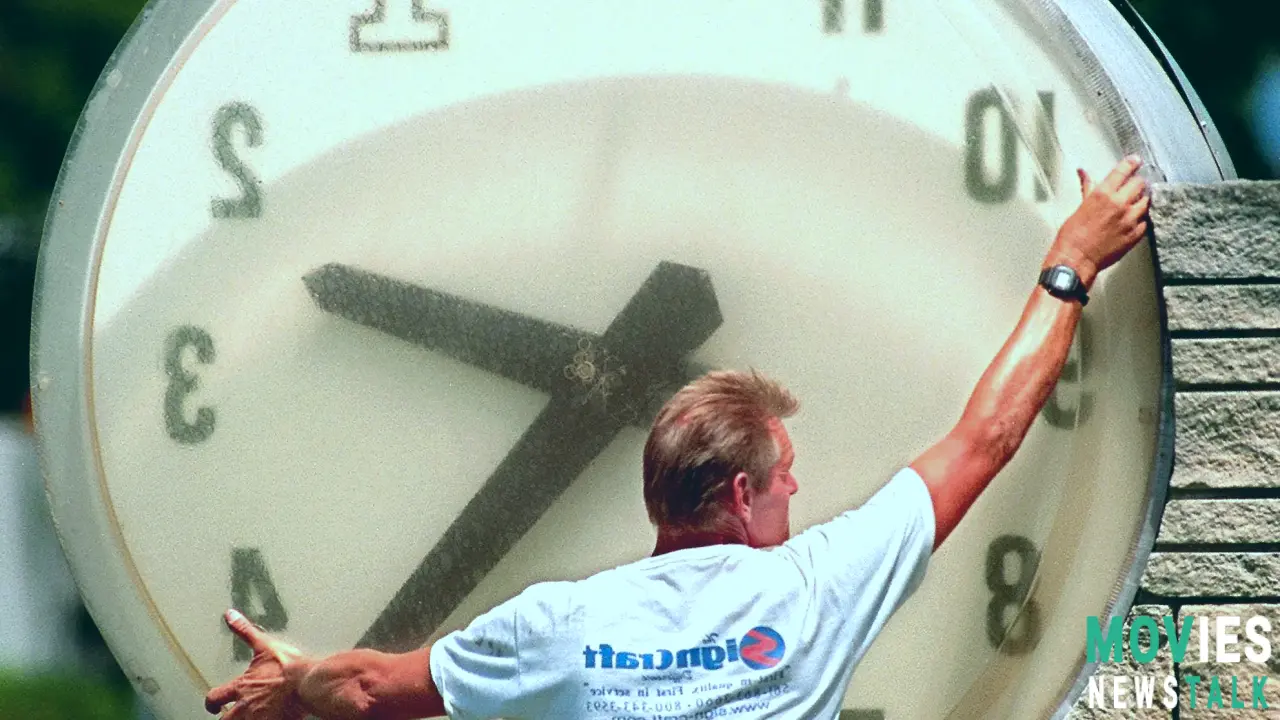The Great Daylight Saving Time Debate: Is Permanent DST the Answer?
Fall Back, Spring Forward…Again? The Never-Ending Time Change Debate
Here we go again, folks! That twice-yearly ritual of messing with our clocks is upon us. On November 3rd, most Americans "fall back" and gain an extra hour of sleep. While early birds get an earlier sunrise, that means an earlier sunset, too, making that time change a point of significant concern and criticism amongst some , causing some very specific responses which further demonstrate a much larger concern in American society. It's that familiar cycle that seems to generate yearly calls from all around the US for ending the practice – altogether! Why do some feel so strongly?
Most Americans, polls show, prefer ditching these time changes completely. Around 43% want year-round standard time, 32% are good with permanent daylight saving time (DST), while that remaining 25% are perfectly happy with the existing setup. This shows the deep split, creating some rather profound divides concerning what policy should really be decided; considering some very obvious effects. Let’s break it all down; and let’s remember, some health officials insist this might be seriously detrimental for human health.
The States’ Stand on Daylight Saving Time: A Patchwork of Plans
Only Arizona (excluding the Navajo Nation) and Hawaii don't do this yearly time change! The remaining 48 states follow DST; making this very uniform for the general public, despite those very passionate desires expressed. Most states want it gone— permanently. Yet these desires and actions undertaken frequently aren't straightforward – leading to a crazy-quilt of proposed laws.
The big problem? Congress won't approve. But some states are saying "Bring on permanent DST!", while others push "Permanent standard time, please!". Senator Marco Rubio (Florida) keeps pushing that Sunshine Protection Act (making DST permanent); passing in the Senate in 2022 but remains stalled in the House; highlighting the political complexities and difficulty involved in bringing changes within American legislative context.
Here's what’s notable in 2024 alone: Many states have tried proposing some form of legislation regarding those proposed legislative actions concerning DST ; nearly thirty proposed legislative actions already! Oklahoma just recently joined a list of nineteen other states passing measures in hopes Congress approves their permanent DST (this includes California—who asked voters for support), many states have certain stipulations.
The Arguments For (and Against) Permanent Daylight Saving Time
Pro-DST supporters cite things like more evening daylight, helping outdoor activities after work; even energy conservation and those improved moods that could potentially alleviate several difficulties present. It’s hard to disagree. However many experts disagree; this is because these improvements lack factual backing.
Experts emphasize potential negative health issues resulting from a more disruptive, permanent change. Professor Erik Herzog (Washington University in St. Louis) points out permanent DST would worsen human health– even than that existing biannual change. He even points toward existing research in people in the east versus the west edges of those existing time zones; these show significant problems relating to sleep.
Why permanent Standard Time might work is actually really quite simple: People like waking up naturally, this aligns closely with standard time (earlier sunrises and those naturally easier rhythms; less artificial stimulation is needed, unlike DST. Those states pushing permanently keeping Daylight Saving, most of them including Florida, where the act was suggested and championed is completely reliant on calculations – using statistical models to measure potential benefits regarding tourism. This ultimately misses far, far deeper health-based insights related to a natural circadian rhythm, impacting everyone but specifically targeting people’s natural sleep cycles. Even people’s jobs were affected!
Past Attempts and Their Consequences: Lessons from "War Time"
The US experimented with year-round DST, once! "War Time" during World War II (February 1942 – September 1945) used DST to supposedly conserve fuel. Didn't really last however; ending it brought an interesting result – state by state variations and later standardization in 1966.
Then came the energy crisis in 1973, when President Richard Nixon tried DST year-round. At first? It was great. It only took a short time for everyone involved to totally disapprove. Those excessively late sunrises in winter made it wildly unpopular; resulting in a swift rollback within only a few months!
Conclusion: A Complex Issue With Deeply Impactful Choices
The time change debate is complex! It isn't a matter of simply agreeing upon what sounds right for you; it also needs serious considerations related to health concerns that those pushing for specific legislative outcomes do not acknowledge. Many health agencies and research emphasizes why permanent DST is far worse, not just for overall health; sleep health in particular, yet these are still ongoing controversies that have far-reaching impact.
And no clear solution currently exists, despite widespread criticism for current measures and calls for legislative action! That added hour of sleep in fall might feel wonderful; and you’re probably eagerly anticipating getting that extra rest this time around – that won’t be solving problems, either!

